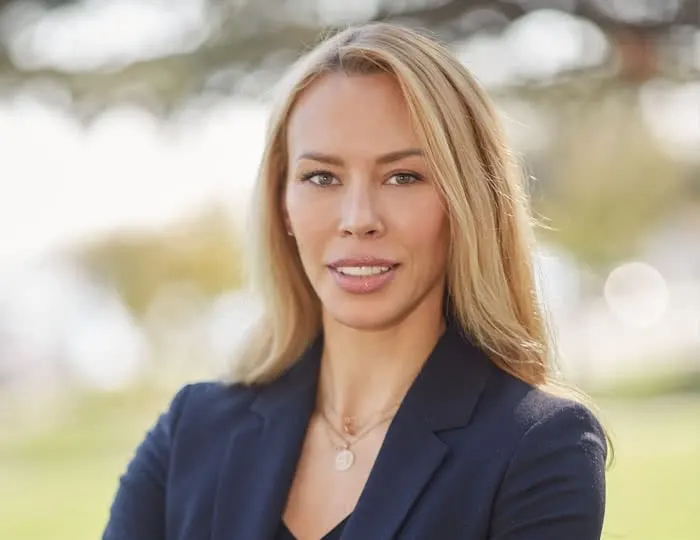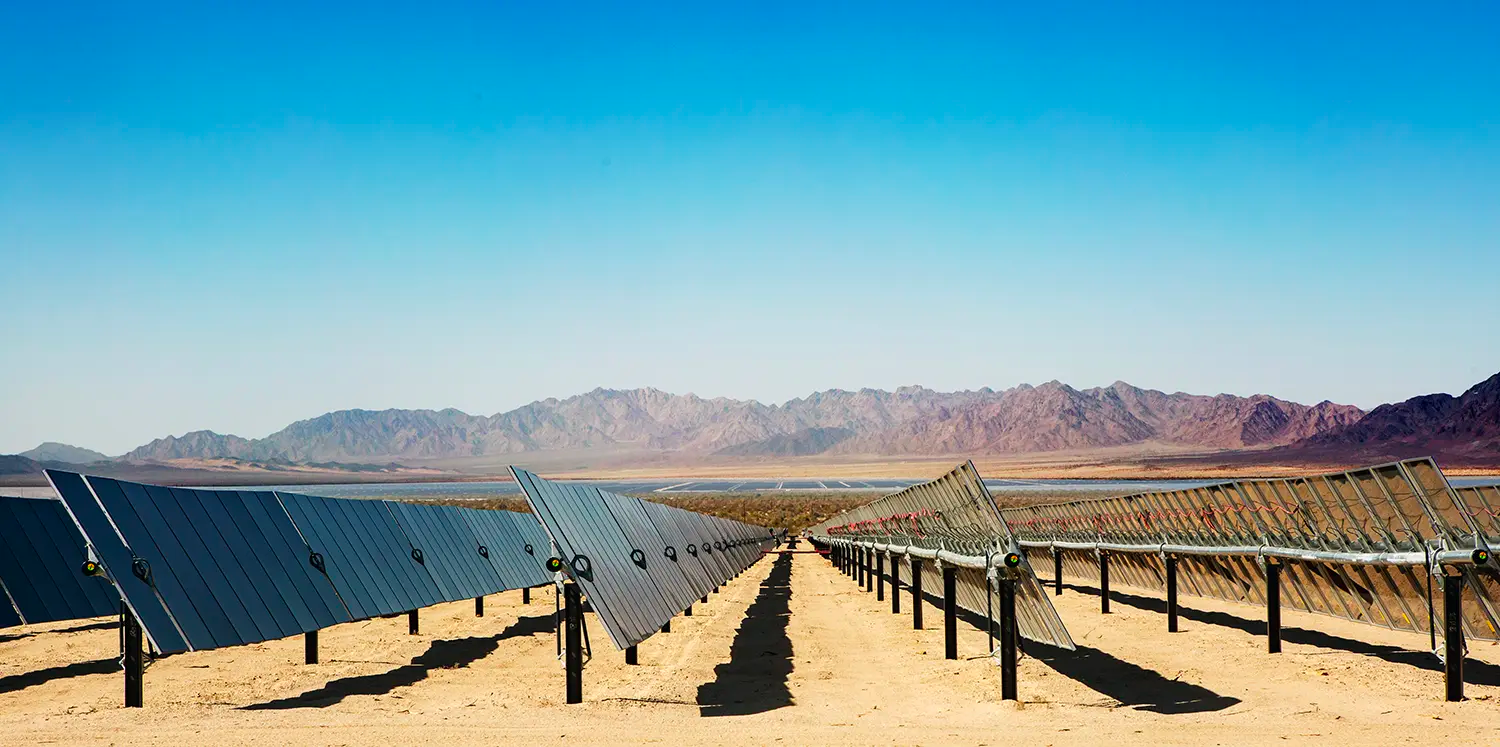Faces of Ava: Marie Fontenot
January 11, 2024
Our VP of Power Resources Marie Fontenot buys $750 million of electricity each year. We look at what she does to keep things affordable, reliable, and clean.

Marie Fontenot, Ava Community Energy’s Vice President of Power Resources, has a complicated job.
Each year her team buys around $750 million worth of energy, capacity, and other services needed to keep the lights on for Ava’s 635,000 customers. The portfolio they assemble needs to be affordable, reliable, and clean, ensuring Ava delivers on its commitments to the Board of Directors and communities.
Procurement also means complying with substantial state laws and regulations, like California’s renewable portfolio standard, resource adequacy, and electric system reliability requirements.
Inherent to the job is risk management. California is at the leading edge of a global transition from old polluting power plants to new clean renewable energy sources. New incentives from Congress, rapidly changing technologies, and the imperative to fight climate change are accelerating the process, while high interest rates, inflation, and a trade war are slowing it down.
Cajun Roots
Marie comes from an old Cajun family; her grandparents grew up in Opelousas, Louisiana, a little parish west of Baton Rouge. Cajuns, originally known as Acadians, were French settlers expelled from the eastern Canadian provinces by the conquering British in 1755. A number of them ended up in the Louisiana Territory, claimed at the time by France.
Marie herself was born and raised in New Jersey, but would visit family in Louisiana. “I learned that Fontenot is a very common name in Louisiana,” she says. “The last time I went there I had an Uber driver with the same name.”
“What’s a Megawatt?”
She went to college in Colorado, getting journalism and business degrees at the University of Colorado. While she was initially interested in marketing, a friend talked her into applying for a job at Xcel Energy.
“In my first interview I had to ask ‘What’s a megawatt?’” she recalls.
She was hired nonetheless, but had to learn on the job and pass a test to get a reliability certification within 9 months — or get fired.
She worked on “commercial operations,” scheduling power deliveries for the Midwestern branches of the multi-state Xcel system, from offices in Denver. “I did that for four and a half years, alternating day and night shifts,” she says. “It was brutal.”
In 2012 she shifted to PG&E in San Francisco, getting out of the daily grind of operations and into strategy and market design. One innovative action she did there was to negotiate some of the first utility contracts for energy storage in the US, putting out a request for proposals (RFP) in 2014.
Lean and Mean
Moving to Ava in 2019 (then known as East Bay Community Energy) was a big change.
“We are lean and mean at the CCA,” she says. “I lead the power resources team here, which is 13 people, plus maybe 10 at the Northern California Power Authority which schedules our supply and demand in the CAISO market. I was part of the equivalent department at PG&E and we had over 300 people. It’s more or less the same work but we are more efficient, faster, more ruthless with our time management.”
“I would spend so much time preparing presentations for higher ups, like weeks,” she recalls. “Now I spend as little time as possible on internal presentations, and a lot of time on analysis and doing the actual work.”
“But don’t get me wrong, PG&E was a terrific place to work,” she adds. “I had strong relationships and felt well-supported. I loved my colleagues.”
“I was always proud to say I worked there, until the Camp Fire,” she says. “People in the company took it very hard. We all felt guilt and heartbreak about the lives lost and devastation.”
“We are mission-aligned with PG&E in many ways, like decarbonizing as fast as possible in an economic way.”
She thinks PG&E should welcome the growth of CCAs. “If they make a mistake in procurement they can be deemed non-compliant with a CPUC order, and get a shareholder disallowance,” she says. “So their shareholders can be penalized, but there is no shareholder benefit if the procurement team does something great. It’s all downside, and no upside. I think they should be embracing load departure and shifting load to CCAs.”
“At Ava we are smaller, trying to do good work. I put a priority on taking care of the 30% of our customers who are low-income,” she says. “We have to decarbonize and protect them at the same time.”
Hard Times in Procurement
Decarbonizing affordably is a challenge right now, as new projects face higher costs.
In addition to high interest rates and inflation, the Covid pandemic created supply chain disruptions and other delays that are still being worked out. Siting permits and interconnection studies were delayed. An explosion of new projects has jammed the grid interconnection queues, escalating the need for grid studies and upgrades to enable hookups. Meanwhile, PG&E, who manages the Northern California grid, is busy undergrounding and fireproofing their system, causing a slowdown in hooking up new customers and new generation.
In 2018, the Trump Administration slapped punitive tariffs on solar panels imported from China, over unfair trade practices. While manufacturers shifted production to Southeast Asian countries, the Commerce Department has threatened to extend the tariffs to those countries as well. The Biden Administration put a temporary stay on the tariffs, which is expiring next June.
There is just as much pressure on the demand side, not just from utilities but from many corporate buyers. Apple, Amazon, Google, and other corporations with zero-carbon and ESG goals accounted for over half of renewable energy deals in the US last year.
“All these things are driving up prices,” Fontenot says. “We used to see contracts for new renewables in low $20s per megawatt-hour. Now they are over 40% higher.”
While Ava hasn’t seen any proposed projects fail because of higher costs, bidders are trying to change prices during negotiations. “We want to do deals that are going to get built, so we are working with experienced developers,” Fontenot says.

The Oberon Solar + Storage project, located in Riverside County, California, Ava’s newest source of energy. (Source: Intersect Power)
One big new source is coming soon. Ava is buying output from a big wind power and transmission project in New Mexico developed by Pattern Energy, which they claim to be the largest clean energy infrastructure project in US history. The Ava board recently approved expanding the purchase from 150 MW to 250 MW, with delivery starting in 2026.
“We are way ahead of the state RPS requirement now,” Fontenot says. “Our main product Bright Choice will be over 50% renewable this year, and our overall carbon-free total, including hydropower, is about 82%.”
Surprise Detour
Fontenot recently had a surprise detour in her career, spending a year working for the White House’s Council on Environmental Quality (CEQ).
“During the pandemic I had moved to the DC area for family reasons,” she says. “A friend asked me to give some guidance on how federal agencies can do clean energy procurement in a way that was market-compatible and had strong performance standards.” The agencies included the Department of Defense, General Services Administration, and others.
Thanks to a three-hour time zone difference she was able to spend her mornings working for CEQ and afternoons for Ava.
“California is kind of at the tip of the spear when it comes to deal structuring,” she says. “We’ve been doing deals for 10 years that others are just getting interested in.”